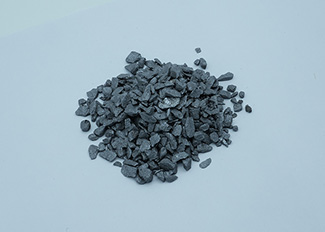- gzk@hnlcalloy.com
- +8615737205888
- Qugou Town, Anyang City, Henan Province
Its graphitizing ability is significantly better than that of 75 ferrosilicon and similar to that of calcium silicon carbon inoculants. But with low melting point, good solubility, low calcium content, and less slagging, it allows lower inoculation. Compared with ferrosilicon and barium ferrosilicon, its outstanding feature is that the number of eutectic clusters is not significantly increased while the chilling is reduced, so it can reduce the shrinkage tendency and improve the compactness and water pressure resistance of castings.
The ability to reduce chilling is about 50% higher than that of ferrosilicon, and it has better fracture uniformity and anti-recession ability than those of ferrosilicon, without increasing the number of eutectic clusters. In addition, it dissolves easily and forms less slag.
Its graphitizing ability is significantly better than that of 75 ferrosilicon and similar to that of calcium silicon carbon inoculants. But with low melting point, good solubility, low calcium content, and less slagging, it allows lower inoculation. Compared with ferrosilicon and barium ferrosilicon, its outstanding feature is that the number of eutectic clusters is not significantly increased while the chilling is reduced, so it can reduce the shrinkage tendency and improve the compactness and water pressure resistance of castings.

Silicon strontium alloys are mainly used as casting inoculants. Strontium is an effective element to promote inoculation in ferrosilicon inoculants. When the degree of supercooling is large, strontium has a special effect of reducing the number of eutectic clusters, which can reduce the shrinkage cavity and dispersed shrinkage of castings.
It is suitable for thin-walled or chilled high-sulfur and low-sulfur gray castings with strong graphitizing ability. It is also used in ductile iron to increase the number of nodular graphites, especially high-nickel corrosion-resistant ductile iron (containing Ni14%, Cu6%, Cr2% ,Si1.5%). In addition, because it reduces chilling and does not significantly increase the number of eutectic clusters, it is especially suitable for gray castings that require dense castings without looseness and water pressure resistance. Different from strong carbon-silicon-calcium graphitizing inoculants, it allows low temperature of molten iron, with low content of calcium and aluminum, less slagging, and no pinhole defect in castings.
Ladle-pour-over: the amount of addition is 30% less than that of ferrosilicon, and it can be increased appropriately for gray cast iron (about 0.1-0.3% alloy cast iron). The allowable range of inoculation temperature is 1360-1460°C, generally 1400-1600°C.
The inoculant should be added to the metal stream into the ladle. Do not add the inoculant on the surface of the molten iron or place the inoculant at the bottom of the ladle. The added particle size and precautions are the same as those of ferrosilicon.
|
Grade |
Si73Sr1.0 |
Si73-78 |
Ca≤0.1 |
Al≤0.1 |
Sr0.6-1.4 |
margin |
Metal-stream inoculation |
|
Grade |
Si73Sr1.5 |
Si73-78 |
Ca≤0.1 |
Al≤0.1 |
Sr1.4-1.7 |
margin |
Ladle inoculation |
|
Grade |
Si73Sr0.8 |
Si73-78 |
Ca≤0.1 |
Al≤0.1 |
Sr0.6-1.0 |
Fe margin |
|
|
Grade |
Si73Sr0.8 |
Si46-50 |
Ca≤0.1 |
Al≤0.1 |
Sr0.6-1.0 |
Fe margin |
It is supplied in 0.2-0.8mm, 0.5-2mm, 1-10mm, 3-10mm particle sizes and 25kg woven ladles, or in 1 ton or 0.5 ton big ladles, plastic woven ladles (tons), and can also be supplied according to user requirements.
The main products include rare earth magnesium ferrosilicon alloy (spheroidizing agent), nucleating agent, pipe powder, ferrosilicon (particles), (high, medium and low) carbon manganese, (high, medium, low and micro) ferrochromium, alloy cored wire, silicon carbide, silicon nitride, slag onglomeration agent, desulfurizer, and carburant, as well as other customized alloy products.